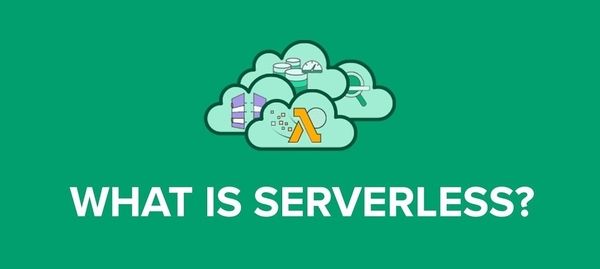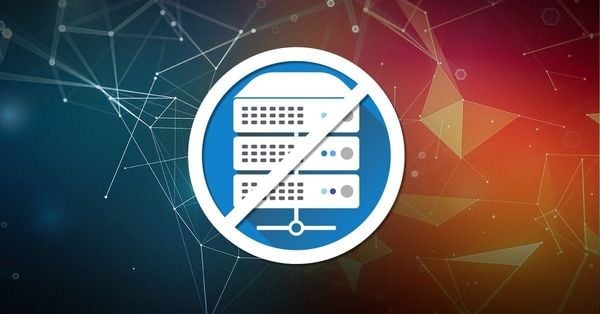
How the Healthcare IT Industry Can Utilize the Blockchain
April 30, 2019
Top Reasons to Migrate Your Business to the Cloud
May 3, 2019Information technologies evolve so rapidly that it’s hard to keep track of all trends and predictions, but it’s necessary to do it because new features have the potential to improve the existing services drastically. One such feature is serverless computing, a brand new technology that is gradually expanding in the web development universe.
According to the report, almost 50 percent of IT decision makers are using and evaluating serverless, while 35 percent alone are evaluating serverless computing, a ten percentage point increase year over year. Another survey shows that 78 percent of participants will use or plan to use serverless technologies in the upcoming months.
Serverless Computing: Definition and Background
Before we start explaining the details of serverless computing, we need to define the concept more precisely.
By definition, serverless computing is a type of cloud computing where the customer does not have to provision servers for the backend code to run on but accesses services as they are needed. In other words, the cloud provider starts and stops a container platform as a service as requests come in and the provider bills accordingly.
If this sounds complicated, that’s because it is. However, we will try to simplify the concept by explaining the background of serverless computing.
A couple of decades ago, web developers had to acquire physical hardware to successfully run a server. This used to be costly and impractical, which forced developers to think of another, more convenient system.

That system came in the form of a cloud, a solution in which providers own and rent server space remotely. It was a big breakthrough compared to the first version, but it had an issue of its own. Namely, web developers mostly had to overinvest to make sure that there would be enough capacity for their monthly activities.
Serverless computing represents a new leap because it allows users to rent only the minimum required server capacity. The “pay as you go” system proved to be better and much more useful for the vast majority of developers.
Pros and Cons of Serverless Computing
As an improved version of cloud computing, serverless computing is good. However, nothing is perfect, and it’s necessary to understand both the pros and cons of the new system. Let’s check out the benefits first:
- Cost-efficiency: The model prevents budget-waste because you only need to pay for what you use.
- Scalability: Scaling your code is simple – you need to send a request and the provider will take care of it.
- Easy backend coding: You can build a network of smaller functions that run independently.
- Turnaround: Developing in smaller bursts, you can speed up the process and complete the project much faster than before.
On the other hand, serverless computing has a few shortcomings as well:
- Platform dependency: Sometimes the platform itself stops you from gaining full control over the process.
- Operational setbacks: If you decide to change a provider, it might be time-consuming and very complicated.
- Weaker performance: This happens only if you don’t cooperate with a reliable provider who does not respond to your requests promptly.
When to Opt for Serverless Computing?
Potential applications of serverless computing are unlimited, but we can mention a few frequently used cases.
For instance, you can opt for serverless computing for file processing when working with huge data volumes. In such circumstances, serverless computing comes in quite handy because it relies on event triggers and makes file processing much more efficient.

Another exciting idea is to use serverless computing for image and video processing. The system administers visual files effortlessly, so you can use it to make modifications, rearrange pictures, and complete other alterations based on the requirements of the targeted device.
Keep in mind, however, that serverless computing is not a perfect solution in all situations. On the contrary, you need to think through it to make the right decision. For example, it doesn’t work well for large apps with extensive calculations that require huge memory capacity.
Before making any concrete moves, you should think about the project and answer a few questions:
- Can I divide my project into several smaller units?
- Will I be able to complete the entire project using their tools and development services?
- Do they offer full-time support? How about data interactions, programming languages, or client connections?
Each one of these questions is significant, so you better come up with accurate answers and make the decision accordingly. If you are sure that it’s the right way to go for your app, then you can choose between some of the most reliable providers.
There are dozens of new solutions currently available online, but we want to narrow down the options are point out the most credible options:
- AWS Lambda from Amazon
Amazon AWS Lambda is an all-encompassing provider that covers everything from system administration to automated scaling.
- Google Cloud Functions
Google Cloud Functions mostly focus on APIs and helps smaller development units to become more productive and agile.
- Microsoft Azure Functions
Microsoft Azure Functions is following the path of the previously mentioned providers, but the main difference is that it comes with a broader palette of programming languages.
Conclusion
Serverless computing is state of the art technology that keeps expanding very quickly year after year. Bearing in mind that it’s a complex concept, we decided to give you a hand here and explain what it is and how it works. We hope our post helped you to figure out the basics of serverless computing, but feel free to leave a comment if you need additional explanations – we would be glad to answer you!

